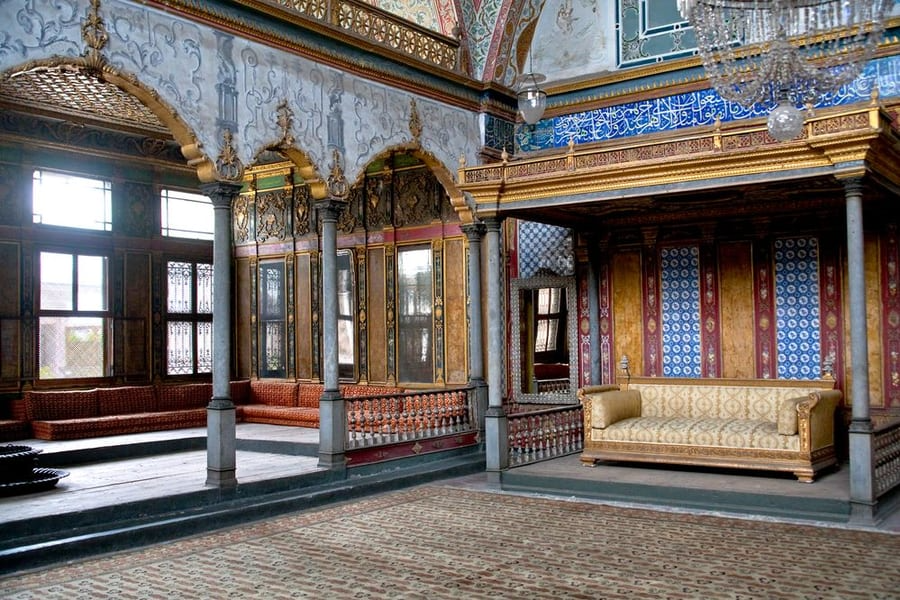
Inside Topkapi Palace: Exploring the History and Architecture of Istanbul’s Most Iconic Palace
Topkapi Palace, located in the heart of Istanbul, is one of the most iconic and historically significant landmarks in Turkey. Built in the 15th century, the palace served as the primary residence for the Ottoman sultans for over 400 years. Today, it is a popular tourist attraction, drawing visitors from all over the world who come to marvel at its stunning architecture and learn about its rich history. Inside Topkapi Palace, visitors can explore the grandeur and beauty of one of Istanbul’s most famous landmarks.
History of Topkapi Palace
Topkapi Palace was built in 1459 by Sultan Mehmed II, also known as Mehmed the Conqueror, shortly after he captured Constantinople (now Istanbul) from the Byzantine Empire. The palace was initially designed as a military barracks and a residence for the sultan and his family. However, over time, it expanded to become a sprawling complex that included courtyards, gardens, mosques, and administrative buildings.The history of Topkapi Palace dates back to the 15th century, and it served as the primary residence for the Ottoman Sultans for over 400 years.
Over the centuries, the palace was home to many of the most famous and powerful Ottoman sultans, including Suleiman the Magnificent and his wife, Roxelana. It was also the site of many important events in Ottoman history, such as the execution of the Grand Vizier Ibrahim Pasha and the deposition of Sultan Osman II.
In 1924, after the fall of the Ottoman Empire, the palace was converted into a museum by the newly formed Turkish government. Today, it is one of the most visited museums in the world, attracting millions of visitors each year who come to learn about the history of Istanbul and the Ottoman Empire.
Architecture of Topkapi Palace
The architecture of Topkapi Palace is a stunning example of the Ottoman style, which was characterized by its use of domes, arches, and intricate tile work. The palace was designed to be a symbol of the power and wealth of the Ottoman Empire, and its architecture reflects this grandeur and opulence.
The palace is made up of a series of courtyards, each with its own unique design and purpose. The first courtyard, known as the Imperial Gate, was where the sultan would receive his visitors and conduct official business. It is also home to the Hagia Irene, a Byzantine church that was converted into an armory during the Ottoman era.
The second courtyard, known as the Court of the Janissaries, was where the Janissaries – elite soldiers of the Ottoman Empire – would gather for training and ceremonies. The courtyard is also home to the Imperial Council Chamber, where the sultan would meet with his advisors and discuss matters of state.
The third courtyard, known as the Inner Palace, was the private residence of the sultan and his family. It is here that visitors can see some of the most beautiful and ornate examples of Ottoman architecture, including the Chamber of the Sacred Relics, which houses many important religious artifacts.
Exploring Topkapi Palace
Visitors to Topkapi Palace can spend hours exploring the many courtyards, buildings, and gardens that make up this historic complex. Some of the must-see attractions include the Harem, where the sultan’s concubines and wives lived, and the Treasury, which houses many of the priceless artifacts and treasures of the Ottoman Empire.
One of the highlights of any visit to Topkapi Palace is the panoramic view of Istanbul from the palace’s high walls. From here, visitors can see the city’s many minarets, domes, and ancient landmarks, including the Hagia Sophia and the Blue Mosque.
Conclusion
Topkapi Palace is more than just a museum – it is a living testament to the history and culture of Istanbul and the Ottoman Empire. From its stunning architecture to its fascinating history











